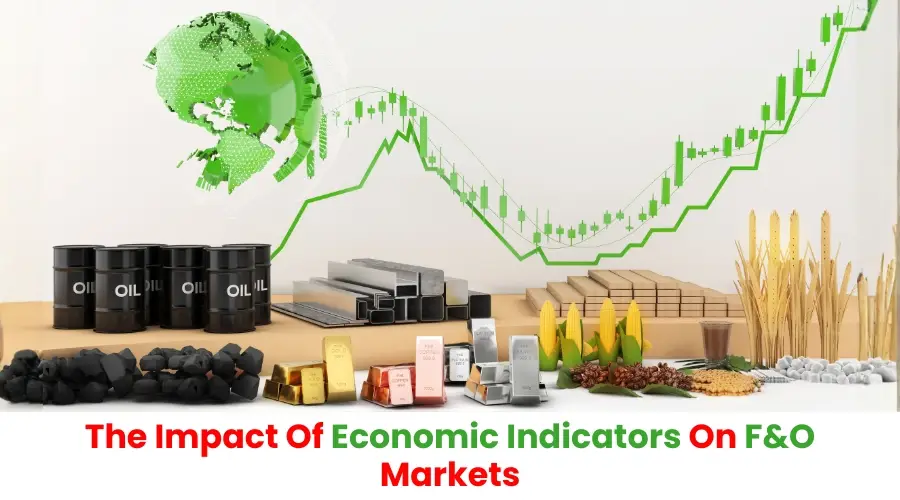The Impact Of Economic Indicators On F&O Markets
1. Introduction: How the Market Mood Swings with Every Data Point
Have you ever notice how sometimes the stock market goes crazy over one small news update? Like inflation data, RBI announcements, or GDP growth numbers? One day futures and options are flying, next day everyone’s panicking.
That’s how tightly the F&O markets react to economic indicators.
If you’re into trading, understanding these signals is like having a weather forecast before a storm. And if you’re still learning the ropes, the best way is to join good share market classes in pune, where they explain these things in simple, practical language, not textbook style.
So yeah, let’s talk about how these economic numbers, like GDP, inflation, interest rates, and others, actually move futures and options

2. First things first – what’s F&O all about
Before we go too deep, lemme break this down a bit.
Futures and Options (F&O) are derivative instruments. In simple words, they’re contracts whose value depends on an underlying asset, like stocks, indices, or commodities. Futures are commitments to buy or sell something at a fixed price on a future date. Options give you the right, but not the obligation, to buy or sell.
Now, traders use these to hedge, speculate, or make profits from short-term price swings. And that’s where economic indicators come into play, they decide the direction of those swings.
3. GDP Growth Rate – the big signal for optimism
GDP (gross domestic product) is like the report card of a country’s economy. When GDP grows faster, it signals healthy business activity, rising profits, and investor confidence.
Impact on F&O: when GDP data is positive, futures on major indices (like nifty or bank nifty) usually go bullish. Traders expect company earnings to rise, so they buy more call options or go long on futures.
When GDP disappoints: you’ll often see heavy unwinding of long positions, sudden spike in put options, and increase in volatility.
Example – during covid, when india’s GDP growth crashed, nifty futures tanked and option premiums shot up overnight.
4. Inflation – the silent market killer
Inflation is basically how fast prices of goods and services rise. And trust me, this number can make or break trader sentiment.
When inflation is high, RBI tends to hike interest rates to control it. And that’s bad news for equities. Borrowing costs go up, profits shrink, and F&O markets start reacting even before the official announcement.
Rising inflation → bearish sentiment → traders buy put options or short futures.
Cooling inflation → relief rally → call options see heavy buying.
Most folks don’t realize how every small inflation uptick gets priced into derivatives instantly.
5. Interest rates – the RBI effect
Whenever RBI announces repo rate hikes or cuts, F&O traders are the first to react.
A rate hike means tighter liquidity and higher cost of funds, which usually pushes futures downward.
On the flip side, when RBI cuts rates, money becomes cheaper, and traders jump in with bullish bets.
If you ask me, interest rate expectations are probably the most watched trigger for intraday volatility in options. One statement from the RBI governor can shift market mood in minutes.
6. Unemployment data – mood of the economy
This is one of those underrated indicators in india. People think it’s more relevant for US markets, but that’s not true anymore. Employment data affects consumption, and consumption drives company performance.
When job numbers fall, spending reduces, which hits corporate sales. Options traders pick that up instantly. They might start building bearish positions on consumer stocks.
So yeah, even local employment numbers from CMIE or government reports can shape short-term F&O sentiment.
7. Fiscal deficit and government borrowing
Sounds boring, right? But traders track this like hawks.
A widening fiscal deficit means the government is borrowing more. That often pushes bond yields up and squeezes market liquidity. When that happens, big institutional traders cut exposure in futures positions, especially in banking and infra sectors. But if deficit is under control, it boosts investor trust, and you’ll see aggressive call buying.
Simple rule: healthy government books → stronger market confidence → bullish futures.
8. Rupee value and global cues
The indian F&O market ain’t isolated. If the rupee weakens badly against the dollar, fiis start pulling money out, which adds selling pressure in index futures.
On the other hand, strong rupee means stable inflows, which can make options traders shift from puts to calls real quick.
Also, US economic indicators like CPI, Fed rate decisions, and non-farm payrolls directly hit indian F&O markets. So even if you trade here, you gotta keep an eye on global updates.
9. Corporate earnings and sector data
Not exactly a macro indicator, but corporate results season has massive impact on F&O.
If companies report better-than-expected profits, you’ll see huge open interest buildup in futures. Traders jump into bullish option strategies like bull call spreads or straddles.
And when earnings disappoint, all that optimism evaporates in a day.
10. Market sentiment indicators – VIX and open interest
Let’s not forget India VIX, the fear index. When VIX rises, it signals panic or volatility ahead. Option premiums get expensive because traders expect big moves.
Open interest (OI) also tells a story. Rising OI with falling prices = short buildup. Rising OI with rising prices = long buildup. Combine that with economic data and you get the bigger picture of where the F&O crowd is betting.
11. Real example – RBI policy day
Remember the day when RBI increased repo rate unexpectedly in 2022? Nifty futures crashed within minutes, call options lost value instantly, and puts doubled in price.
That’s how tightly the F&O market reacts. Traders who understood how rate hikes work made money, others were left confused. That’s why understanding these indicators ain’t optional, it’s essential.
12. Why traders must track these indicators
To be honest, if you trade without checking these numbers, it’s like driving blindfolded. Economic indicators help you predict market mood before it hits you.
- 1. GDP tells you if trend is up or down.
- 2. Inflation tells you if volatility is coming.
- 3. Interest rates tell you how liquidity moves.
- 4. Rupee value tells you if fiis are coming or going.
Combine all this, and you’ll trade smarter—not just react emotionally to market noise.
13. Disclaimer
This blog is provided for general information only and does not represent financial advice. Please take investment decisions after consulting a SEBI-registered financial advisor. Past performance is not indicative of future outcomes. Investments have inherent market risks, learn before you earn.
14. Conclusion – connect the dots before you place a trade
So yeah, the F&O market dances to the tune of economic data. GDP, inflation, interest rates, rupee value – they all matter more than most traders realize. These indicators don’t just show where the economy is heading, they decide where your trades will end up too.
If you really want to master how these signals affect price movements, then learning from professionals helps a lot. Check out some online share market classes
Where they teach you how to read data, plan strategies, and react before everyone else.
Because at the end of the day, markets reward those who understand what’s driving them, not those who just follow the crowd.
15. Frequently Asked Questions:
Q1. What are economic indicators and why do they matter for traders?
Economic indicators are numbers that show how the economy is performing — like GDP, inflation, unemployment, or interest rates. They matter because these numbers decide the mood of investors and traders. When data is good, markets rise; when it’s bad, fear takes over. In F&O trading, these changes happen fast, even before news spreads fully.
Q2. How does inflation data affect F&O markets?
When inflation rises, it signals higher prices and possibly rate hikes from RBI. Traders usually go bearish, meaning they short futures or buy put options. But when inflation cools, optimism returns, you’ll see people buying call options or building long positions in futures.
Q3. What role does RBI’s repo rate play in F&O trading?
Repo rate is like the heartbeat of the economy. If RBI hikes it, liquidity tightens, borrowing gets costly, and the market sentiment turns cautious. That leads to a fall in futures prices. When RBI cuts the rate, it boosts confidence and buying interest in call options and index futures.
Q4. Do global indicators also affect Indian F&O markets?
Yes. Global data like US inflation numbers, crude oil prices, or Federal Reserve policy can shake the Indian market. If US markets fall or the dollar strengthens, FII money flows out, which directly pulls down Nifty and Bank Nifty futures.
Q5. How can beginners track these indicators easily?
You don’t have to be an economist. Just follow RBI press releases, government GDP reports, and sites like NSE, Moneycontrol, or Investing.com for regular updates. Learning the logic behind each indicator through professional share market classes also helps.



